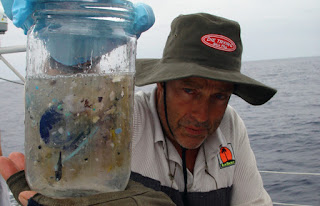We have been enjoying the lubberly comforts of living in our little rented New Zealand flat for the past few weeks, and are still getting used to the idea that it’s summer. It’s been a nice combination of relaxing, touring, relaxing, boat projects, relaxing, bicycling, relaxing, writing, and relaxing. DID YOU KNOW that on land, hot water comes out of a faucet and it doesn’t run out? Holy mackerel. Jim is having a little trouble getting used to doing dishes so fast.
The view from our porch adds to the relaxing part. Here’s Ngataringa marsh at low tide.
And here it is at high tide. All kinds of birds are here, including Tuis, Australasian harriers, reef herons, paradise shelducks, mallards, Pukekos (a purple swamphen), gulls and terns of various species, Eastern rosellas (a parrot), kingfishers, welcome swallows, thrushes, blackbirds, sparrows, mynahs, starlings, tiny passerines I haven’t yet identified, and that’s just the birding from the back porch! The birding in the Hauraki Gulf is sublime.
This is good medicine. While there have been some episodes of frequent and tiring heart palpitations, Karen’s doctor pronounced the condition to be benign at this point, and with the medications it’s mostly under control. Plus, the added dramatic improvement in cholesterol levels made us all happy. So we went to Auckland's famous Sky Tower, and here’s how we celebrated that and a belated birthday:
Just kidding. We took an elevator and merely indulged in a Schlocky Shameless Tourist Photoshopped Photo-Op. We also had dinner in the rotating restaurant, and it was good. We watched actual jumpers leaping, though technically they didn’t go head-first on a bungee cord. They were harnessed in and strapped between two guide cables, and seemed to fly rather than fall the 190+ meters to the ground. Here’s what the gear looks like at the start of a jump.
And here’s a jumper starting down, seen from the ground with a telephoto. Look closely at the rim of the tower.
It costs $250 to jump, it lasts about three seconds, and you have to sign a few sternly-worded forms. In Karen’s humble opinion, a root canal would be preferable. This little dealie-o, below, standing on a glass floor 190 meters above the street, was plenty weird. We know what you’re thinking: Huh? This from a pair who crossed the Pacific on a 24-foot boat?
Lean out a little for a thrilling street view:
Here’s the view we like best, from the deck of the ole Sockdolager at good old reliable sea level:
And here is the New Zealand courtesy ensign, with the silver fern flag for extra credit.
The venerable and friendly Devonport Folk Club welcomed us, and Karen sang a couple of tunes as part of the evening's open mic performances.
It’s a WW2 bunker atop an extinct volcano called Mt. Victoria, and was converted to a listening room and folk music library in the 1970s. Boy is it a nifty place.
The Devonport Folk Club probably has the most spectacular view of any folk club in the world. This is looking east-southeast toward the Coromandel Peninsula. The DFC is also one of several organizers of the Auckland Folk Festival, where we’re headed next weekend. We’ve rented a camper!
We also wandered through the maritime museum and saw the original HMS Bounty’s anchor in a setting of excellent exhibits that included these two treasures.
Is that a labor-intensive but beautiful frame, or what. And Brion Toss, this one’s for you:
Boat projects included repairing the galley’s saltwater tap, which had jammed. It was clogged with pumice. Jim checked the engine’s saltwater intake filter, and sure enough, pumice was in there, too. Below is a photo of what he found. Anyone sailing from Tonga to New Zealand should be aware that you’ll be sailing not too far from an active undersea volcano, and pumice floating in the water will likely be a problem for your saltwater intakes. Jim and Tom saw floating pumice all the way from Minerva Reef almost to New Zealand, which amounts to a thousand miles of floating rocks and bits. Some pieces are large, grapefruit-sized, and others are tiny. Some have been colonized by sea life, including small crabs! To the volcanologist who contacted us on the Tonga to NZ post, Jim’s going to be writing to you shortly.
To continue the ongoing theme of exploring familiar food products with exotic or wacky packaging and reporting back to you, here is a box of NZ ice cream with a label that reminds us all to please, read labels slowly to avoid the startle response.
And another, with an insectivorously-worded announcement that should warn Lyme disease patients away and cause others to hope the contents aren’t too crunchy.
The extreme weather in Australia that resulted in a new color, purple, being added to its weather maps has not affected New Zealand to similar extremes, but it has been hotter, muggier and windier than normal, according to locals.
A few more weeks of living on land and then we’ll be off again to explore the Hauraki Gulf for some coastal cruising. The photo below is proof that Jim has figured out how to sit in the rain, eat potato chips and drink a beer all at once, by steering with his toes.






































